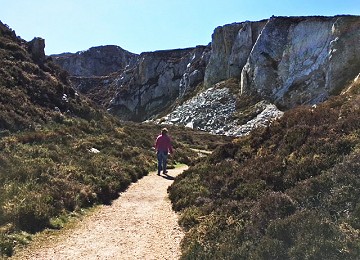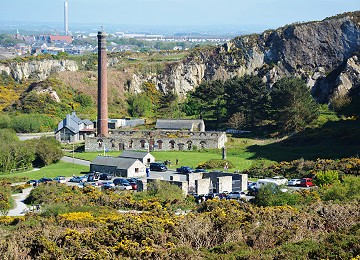holyhead breakwater
Holyhead Breakwater is situated at the north-western end of Holyhead on the Island of Anglesey was built to provide shelter to the body of water at the North Western end of Holyhead, this was in addition to the harbour which already existed at Holyhead.
The breakwater at Holyhead is a staggering 1.7 miles long, the longest in Europe and is not only very pleasant to walk along as it has a promenade but extremely popular with fishing and various competitions take place throughout the year from this excellent fishing location.
In 1850 the Britannia Bridge was completed which was the vital link between Anglesey and the mainland, this would allow the Chester and Holyhead Railway to carry more freight and passengers to the Port of Holyhead, and then onto Ireland.
Holyhead Breakwater took 28 years to build
Work on the Holyhead Breakwater started in 1845 and was not full completed until 28 years later when it was finally finished and officially opened on the 19th August in 1873 by Albert Edward, who was the current Prince of Wales.
More than 7 million tonne’s of limestone were brought and used from the near by quarry on Holyhead Mountain and nearly 1,300 men were used on this massive construction and unfortunately more than 40 men lost their lives during the construction of the Holyhead Breakwater.
The outer facing wall of Holyhead Breakwater is constructed of limestone blocks which weighed 10 tonne’s each.
Divers using submarine bells were used to level the sea bed so that the other side of the break water could be constructed. The divers in these “bells” used large hammers and picks during this mammoth task, they even used gunpowder to blast large rocks in their effort to level the sea bed where the blocks needed to be situated to make the breakwater.

7 Million Tonnes of Rock to Build Holyhead Breakwater
Most of the seven million tonne’s of rock was carried from the quarry on Holyhead mountain to the breakwater by a specially built broad gauge railway, the length of this industrial railway line was nearly a mile and a half.
This railway line ran the length of the breakwater and continued to run to help with the maintenance of the breakwater until the 1980s when it stopped. The remains of the line can still be seen today along the breakwater.
Another quarry on Anglesey supplied limestone for the breakwater, this quarry in Moelfre also supplied the limestone to build the Marquess of Anglesey’s column in Llanfair PG.
Holyhead breakwater not only holds the record for being the longest breakwater in the United Kingdom, but also the longest in Europe, it’s total length is just under 1.7 miles in length (2.4km long.)

Holyhead Breakwater Country Park
This former quarry which supplied most of the stone for Holyhead breakwater has now become the Breakwater Country Park, a beautiful area, which is about 106 acres site, a popular place for walking, freshwater fishing and Rock Climbing.
When the breakwater was finished the old quarry was to become a new home for industry, in about 1901 a brick works was built and special brick used in smelting furnaces were manufactured there.
The company was to produce bricks until the early part of the 1970’s and then reopened 10 years later as the Breakwater Country Park, the brick kiln chimney, axles from the crushers and a fog signal cannon which was used at North Stack are on display there today.
The Breakwater park even has its own lake - Llyn Llwynog, (Fox Lake) a freshwater lake stocked with fresh water fish, and in 2005 Anglesey County Council built a 500m long path around the lake which is wide enough to allow wheelchairs around it. There are many paths through the Park.






